- | 8:00 am
How ‘ASMR purple’ took over your feed
Experts explain how the hue became synonymous with social media’s favorite videos.
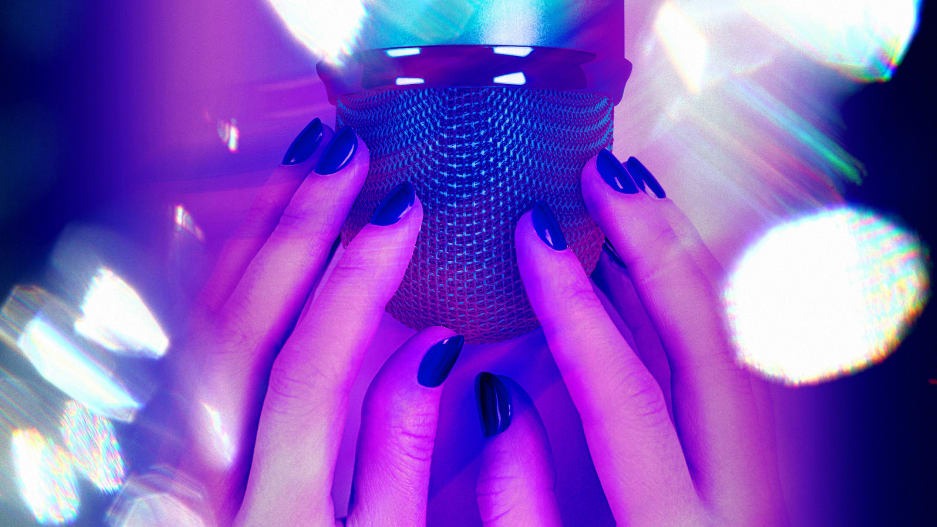
Long painted fingernails tapping softly on a wooden brush. The crisp crinkle of plastic wrapping on a bar of soap. Slow inaudible whispers into a high-quality microphone. These are just a handful of the many sights and sounds that can give me tingles. I’m one of the millions of people who experience ASMR, or autonomous sensory meridian response. It’s a physical sensation described as a tingling that starts in your head and cascades down your neck and back. It’s very relaxing—even hypnotic—and for many people, it can be triggered by specific sounds or experiences. Over the last decade or so, YouTube has become a treasure trove for people seeking tingles, and a potentially lucrative platform for the thousands of content creators (more colloquially known as ASMRtists) looking to create them.
In the last year, I’ve noticed a recurring trend on the channels I follow: Purple is everywhere. The specific hue varies—a dark indigo backdrop here, a violet LED light there. Sometimes the props are purple: a gentle blushing lilac blouse or satisfyingly sticky fuschia slime. Oftentimes there’s a fluorescent quality to the color. As ASMR has grown to become one of the most popular search terms on YouTube, it has seemingly coalesced around an aesthetic, with purple as its palette. But why has this color taken over ASMR? Creators and color experts have their theories.
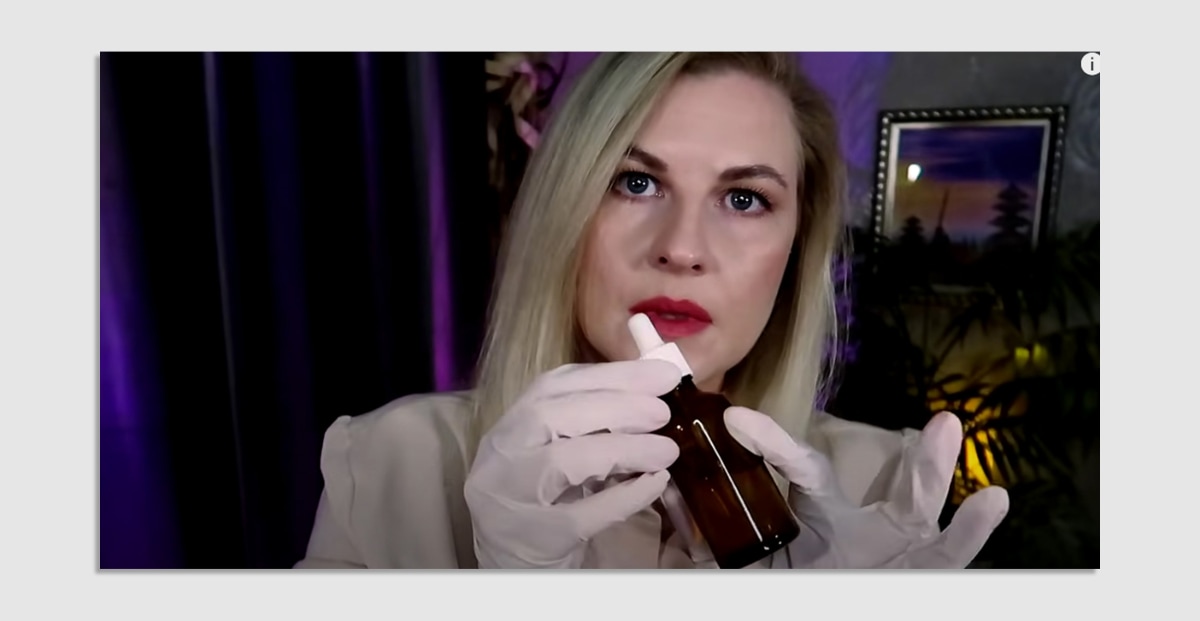
Scientists are still trying to figure out what ASMR does to the brain, and whether it comes with any health benefits. Research suggests ASMR is associated with lowered heart rate, might activate the brain’s reward centers, and can induce feelings of being connected to others. Some speculate it may have evolutionary roots in promoting prosocial behaviors.
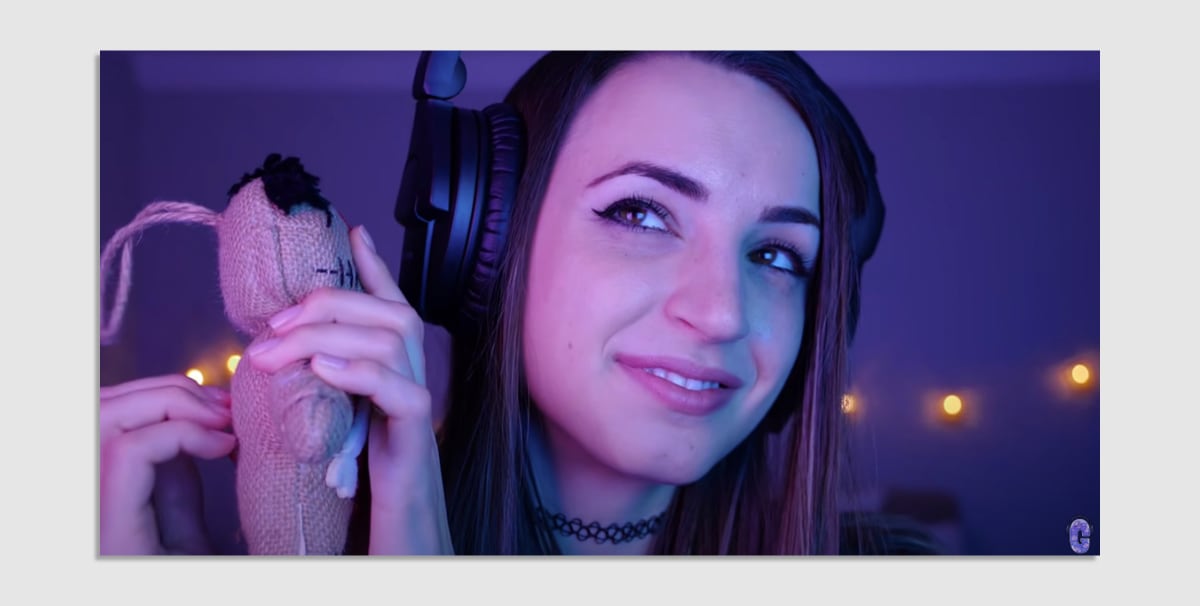
Common triggers involve personal attention and role play, and can make the subject feel like they’re being looked after by a trusted friend or caregiver. Many ASMR videos try to transport viewers to specific settings—a spa, for example—offering a visual element of escapism on top of audio triggers. Color can help set the mood. “Colored lighting is a really good way to change atmospheres,” says Megan Hole, a professional textile colorist, and a color developer at Nike.
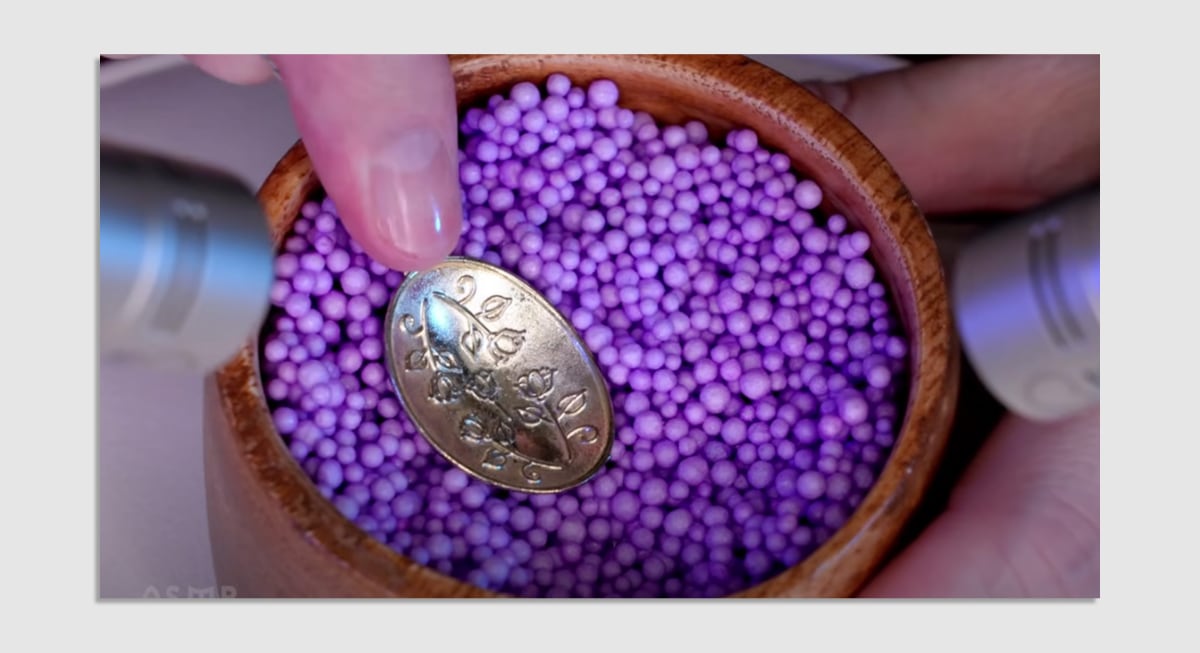
In recent years, purple has also come to symbolize mysticism and spirituality. “The purples in general speak to unconventionality, creativity, imagination,” says Laurie Pressman, Vice President of the Pantone Color Institute. “It’s one of those colors that, especially if you go into blue purples or blue-ish pink, there’s a mystical quality to it.”
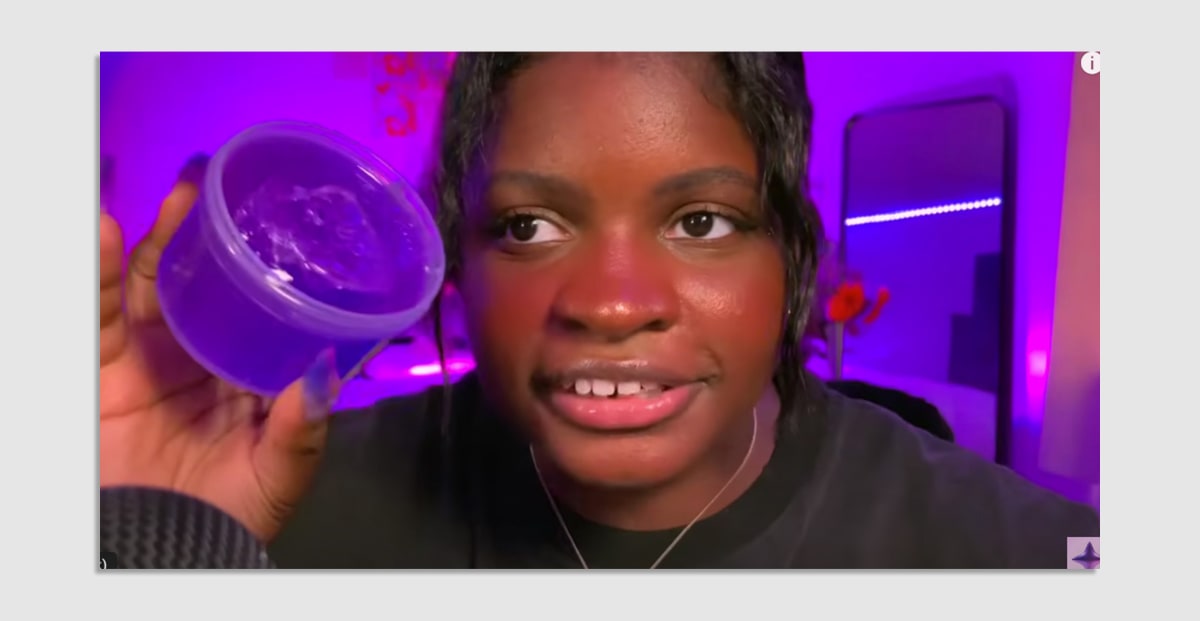
Certainly many ASMR artists draw on elements of mysticism in their videos—reiki, tarot readings, meditation—to offer viewers a sort of spiritual escapism from a world in chaos. During the pandemic, as the world retreated indoors and social interaction faded, many people sought connection and comfort on the internet, and this included ASMR content. Google queries for ASMR spiked as lockdowns took effect. And it was around this time that more ASMR creators really started incorporating the purple palette. “They’re creating these other worlds that are really pulling people away from some really dark things happening,” says Lisa Lenoir, a cultural media sociologist and assistant professor at the Indiana University, Bloomington, Media School.
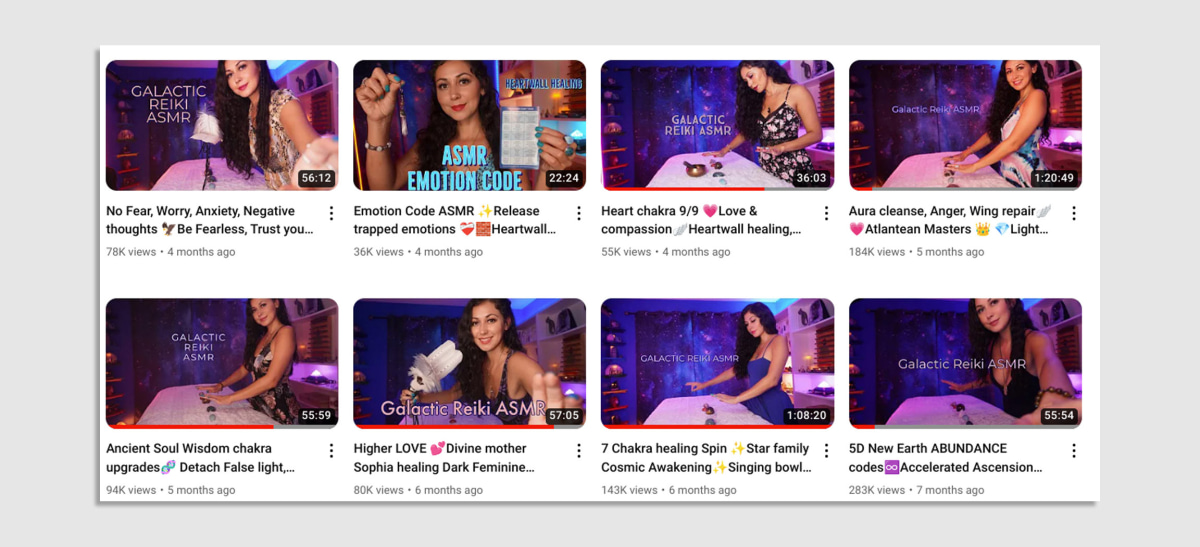
Purple’s popularity really got a boost when Pantone made “Very Peri”—a new periwinkle shade —its 2022 Color of the Year, just as the vaccine rollout started to bring a mix of hope and excitement. Pantone sought to capture this sentiment in Very Peri’s gentle blending of blue and red. “There’s a real trust factor when you think about the blues and we needed that stability,” Pressman says. “You blend this faithfulness and constancy of blue with excitement and energy of red. We needed both.” A year later, trend forecasting company WGSN followed suit, calling out “Digital Lavender” as the new shade on the block. “Its sensorial quality makes it ideal for self-care rituals, healing practices and wellness products,” WGSN said, “and this purple will also be key for consumer electronics, digitized wellness, mood-boosting lighting and homewares.”
As purple became the color du jour, Lenoir says it’s possible that ASMRtists started using it to signal their own trendiness to attract more sponsors. That may seem cynical, but it’s true that many YouTube creators’ ultimate goal is to make money from their channel. And one of the best ways to do that is through brand sponsorships.
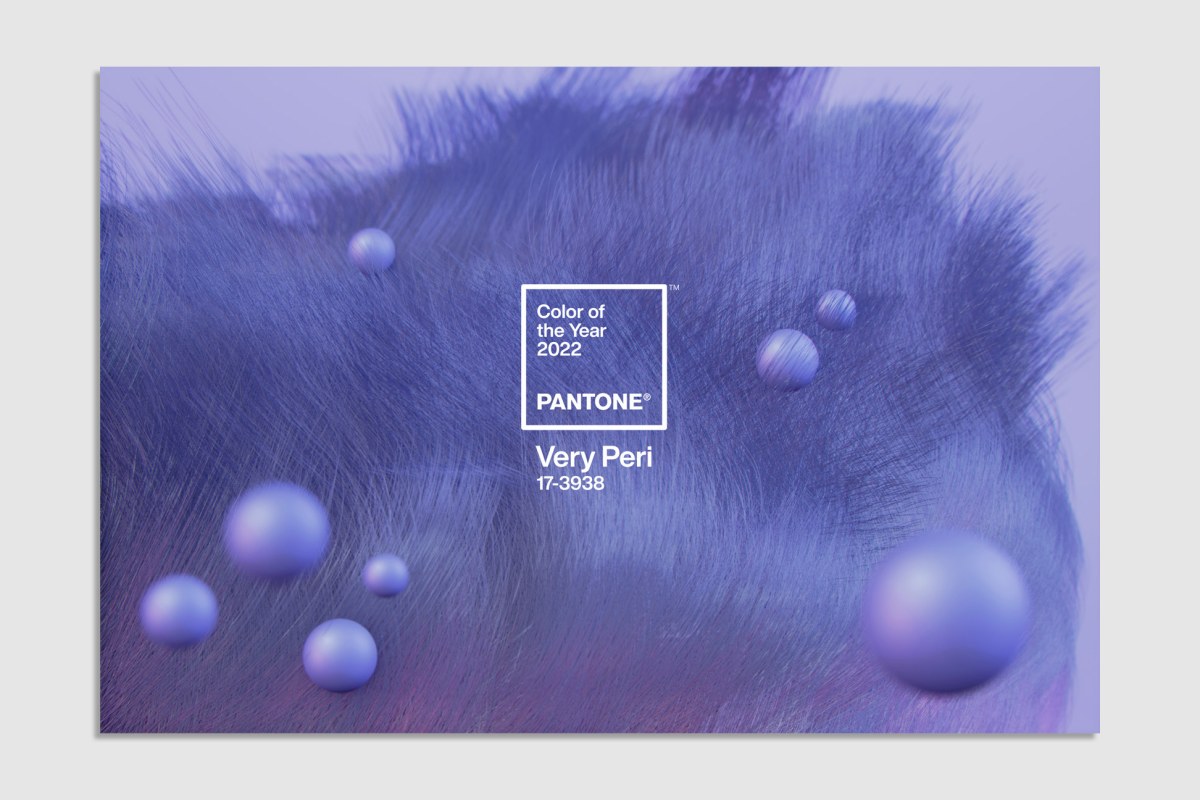
“The market is what’s driving this, I would argue,” says Lenoir. “[These creators] want to continue to be relevant in the market. By having this many followers and creating these experiences, they’re getting some level of compensation for that. They’re monetizing, and using these visual aesthetics that are helping to reinforce that.”
Perhaps coincidentally, purple has long been associated with royalty and riches because of how expensive it used to be to make purple fabrics. The molluscs needed to produce the dye were rare and costly, so only the wealthy and powerful could afford to drape themselves in this shade. These historical roots could help explain why so many “personal attention” ASMR videos—about hair brushing, makeup application, and skincare—feature purple. “They’re using all these really expensive face lotions and things you might not be able to afford, it’s sort of aspirational,” says Hole. “Is it the idea that the watcher is being pampered?”
Gender could also be playing a role here. Ali, whose channel Ali ASMR Sleep has 20,500 subscribers, told me between 75% and 80% of her subscribers are female, and most ASMR creators are female. “I’d say a majority enjoy the ‘girly’ colors,” she says.
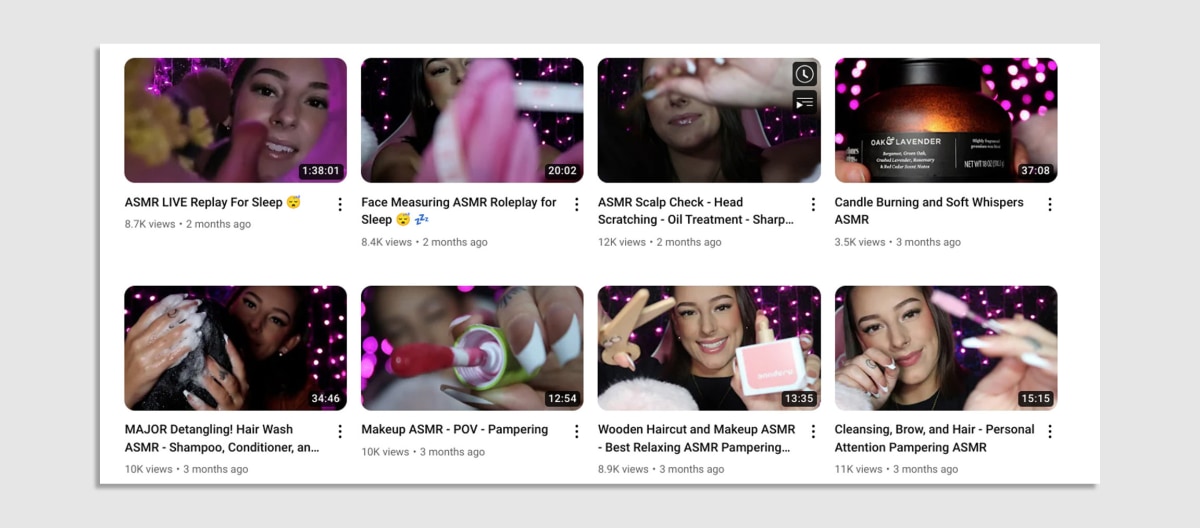
About a year ago Ali’s channel was splashed with purple, too, but lately she’s settled on a new color: pink. And she may have inadvertently tapped an emerging ASMR color trend.
Anecdotally, it seems pink is starting to pop, and purple may be on the way out. Could this be a delayed response to the phenomenal popularity of the Barbie film? Maybe. A reaction to Pantone’s 2023 Color of the Year, Viva Magenta? Perhaps.





































